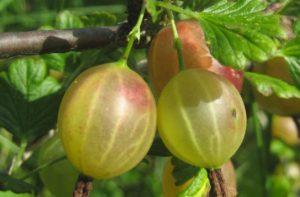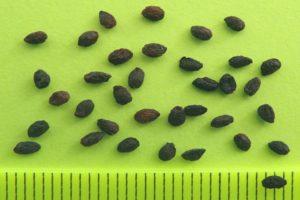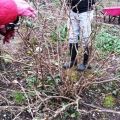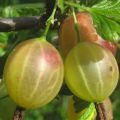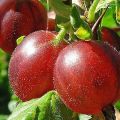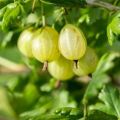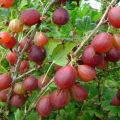Description and characteristics of the gooseberry variety Malachite, planting and care
Despite the appearance of many fruit and berry novelties of Russian breeding, attention to old species does not wane. One of these reliable gooseberry varieties is Malachite. It was bred more than half a century ago. It got its name, most likely, from the color of young leaves, which are, indeed, malachite.
The history of breeding varieties Malachite
People used the fruits of wild gooseberries in the 16th century. But the berries were sour, small. Working to improve the quality of the shrub, domestic and foreign breeders created new varieties. Already in the 17th millennium, more than a thousand gooseberry species were described.
The date of creation of the Malachite variety is considered to be 1959. Although breeding work on it began at the end of the 40s. Malachite is the result of crossing 2 known species: Black Negus and Dates. The author of a bold idea - Sergeeva KD. According to her program and methodology, tests of a new variety were carried out. In 1959, the gooseberry Malachite was recorded in the State Register.
Description and specifications
Gooseberry Malachite was recommended for cultivation in almost all regions of Russia with short summers and long cold winters. The variety has absorbed the best qualities of other gooseberry species, for which many gardeners fell in love.
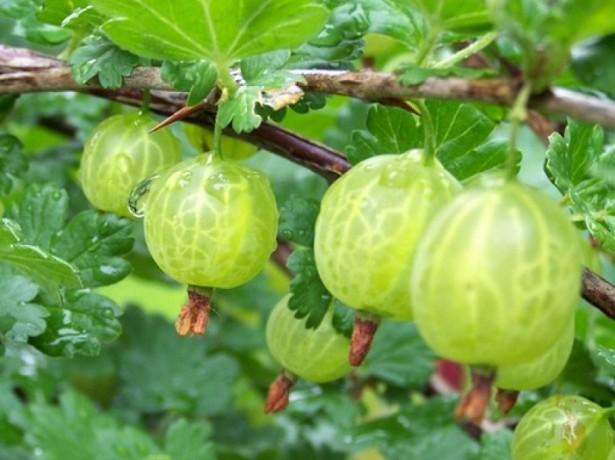
External parameters of the bush
The 1.5-meter plant has a wide, dense crown, but at the same time it is compact:
- Sprawling, fast-growing bush.
- Light green shoots intertwining with each other, covered with long infrequent thorns.
- Gooseberry bush Malachite self-pollinated, bisexual. With skillful care, it can bear fruit up to 30 years.
- On the shoots, light green bark, smooth, not pubescent at all, sometimes acquires a bluish tint.
- Malachite-colored leaves are three- and five-lobed.
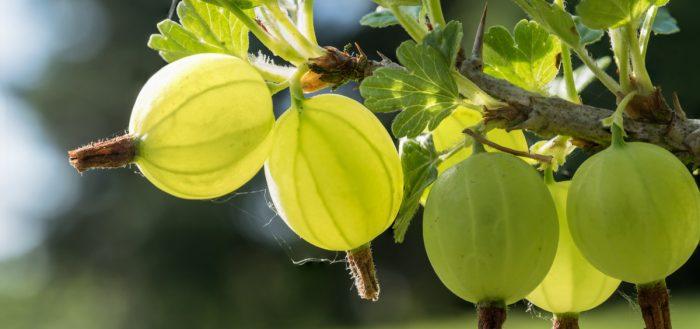
Taste qualities and description of berries
Large-fruited gooseberry Malachite:
- Emerald berries weighing up to 6 g each with white veins visible through the transparent dense skin.
- The taste of the fruit is sweet and sour, and has a pleasant taste. With a delicate aroma. They contain a large amount of ascorbic acid.
- Ripe berries may not crumble for a long time, gradually acquiring a yellowish tint.
- Thanks to the strong skin, the fruits are stored for a long time and are easily transported.
Important: the berries come off without a stem, which is a big plus when picking fruits.

Berries are universal in use: they are eaten fresh and processed, preserves, jams, compotes, sauces are cooked.
Ripening period and yield
The peak of fruiting at Malachite begins from the 4th year of life. Fruit ovaries are formed in the second year. The bush begins to bloom in May, and in July, emerald-colored berries ripen.
They do not ripen immediately, but in stages, therefore, until the end of August, the gooseberry bushes are full of green fruits.
Yield indicators of the Malachite variety are high. Gardeners collect up to 7 kg of healthy and tasty berries from one bush.
Drought resistance and frost resistance
When creating a hybrid, breeders suggested it for cultivation in any climatic zone. Gooseberry Malachite is viable, easily tolerates temperature extremes. Young seedlings will not freeze in frosts down to -25 ° C without shelter (provided that they are covered with snow).
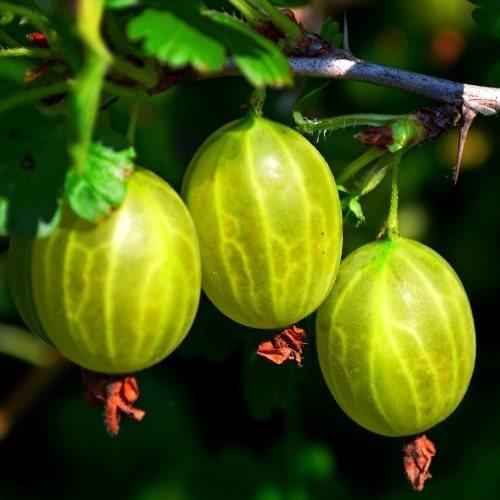
A cool summer with a monthly norm of rains will also not affect the fruiting and growth of the berry. But hot, dry summers can adversely affect the harvest. The bush must be watered abundantly. Otherwise, the gooseberry will not give a good harvest, and the fruits will be small.
Immunity to diseases and pests
Gooseberry Malachite - resistant to many fungal diseases, such as powdery mildew. Attacks by pests such as moth and sawfly are also not dangerous to the variety.
Gooseberries can affect diseases:
- septoria;
- rust.
Preventive treatment of the berry will not be superfluous.

Pros and cons of culture: is it worth growing
Some gardeners like any garden culture, and they grow it with pleasure. Others are not satisfied with some qualities. Gooseberry Malachite, having many positive characteristics, has negative sides.
| Advantages of the variety | disadvantages |
| Large-fruited | It takes a lot of space to grow |
| Hardy: bears fruit in all climates; does not get sick with powdery mildew; individual pests (moth) are not afraid | The presence of thorny thorns. Weak immunity to anthracosis, septoria |
| Harvestable. With skillful care, productive up to 20 years | |
| Suitable for fresh consumption, for processing |
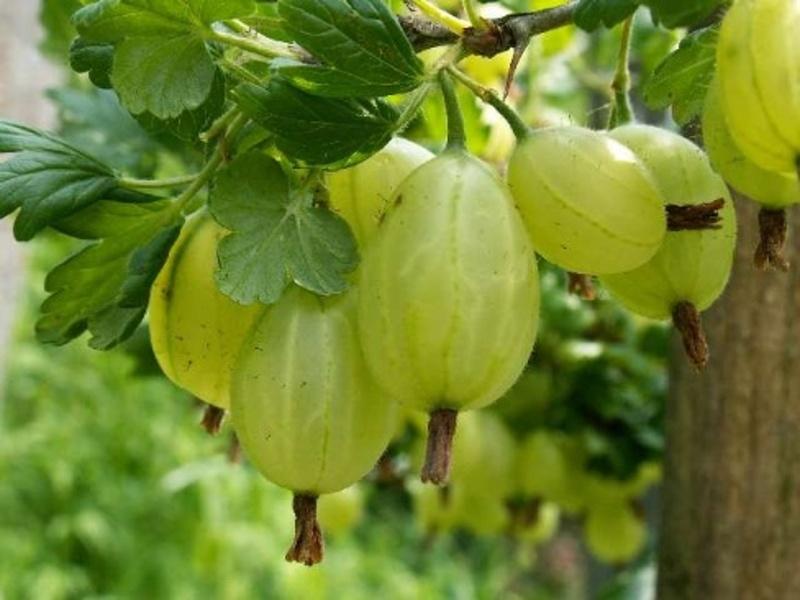
According to many gardeners, the Malachite gooseberry variety is worthy of attention. It is not for nothing that experienced gardeners have been growing it for many years and are not going to part.
Growing recommendations
Malachite is an unpretentious bush. It grows outdoors in almost any soil, even clay.
Necessary conditions for planting seedlings
The main requirement for the site is the absence of closely located groundwater. The place for planting Malachite gooseberries should be well lit by the sun, although partial shade will also suit him.
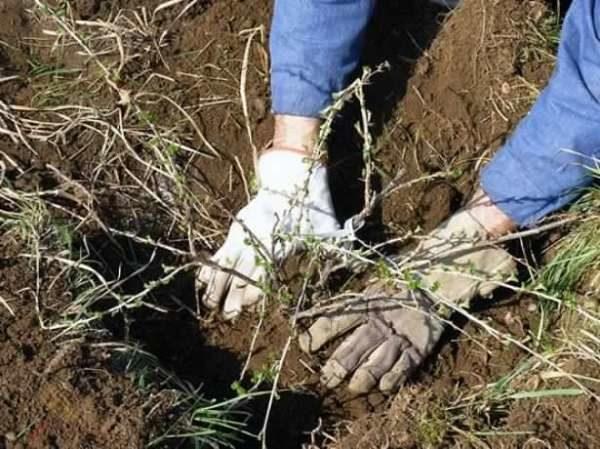
Landing time and scheme
Autumn and spring are the periods when gooseberry seedlings are planted. But many gardeners argue that planting the Malachite variety in the fall is preferable, since it will be easier for a young plant to endure the frosty winter, and the spring awakening will be more effective.
Saplings are planted when all the leaves fall off, and at least a month will remain before the onset of cold weather. Since the Malachite gooseberry bush is spreading, when planting, an interval between plants should be observed at least 1.5-2 meters.
The seedlings are deepened by at least 55 cm. The length of the shoots should not exceed the length of the main root (ideal).
Important. If the planting of bushes is too dense, this will complicate the care of the gooseberries, will not provide the plants with the necessary ventilation, which will negatively affect the future harvest.

Seasonal care basics
Malachite is a variety that does not require special care and time consuming. It is minimal:
- watering;
- loosening;
- feeding (if necessary).
Loosening the soil
Since the main root of the berry is powerful, developed, air is needed for better growth and development of the plant. Therefore, it is imperative to loosen the soil, while removing the weeds.

Loosening should be done carefully so as not to damage the roots, since they are located close to the ground.
Regularity of watering
It is especially important to water the seedlings when planting. Having planted a Malachite gooseberry bush, it is watered abundantly (1-1.5 buckets are poured under each plant). The gardener should check the moisture content of the soil. Drying of the soil, as well as waterlogging, should not be allowed. If the summer is not hot and moderately rainy, then the Malachite berry does not need watering.
Top dressing
For stable yields, to maintain a productive life, the gooseberry Malachite needs annual feeding.
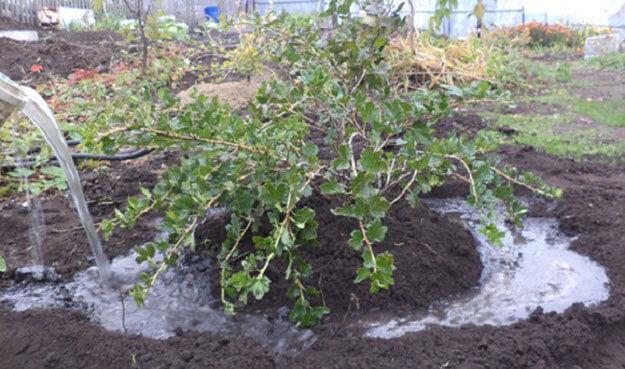
The first one can be brought in before the snow melts. It is scattered in handfuls along the contour of the crown of the bush. Urea, ammonium nitrate will do. If there is no snow, then you will have to deepen the top dressing with a hoe.
After half a month, watering with a diluted mullein or herbal infusion in a ratio of 1: 2 is allowed. (10 liters of water, 5 liters of mullein or herb infusion).
According to experienced gardeners, it is advisable to feed the berry with dry mixtures, since the bush "prefers" to absorb them slowly. Rapid absorption of nutrients along with watering is undesirable.
Pruning and shaping the bush
The guarantee of a long productive life of gooseberry bushes is pruning, crown formation. Malachite is not a standard variety, so dozens of new shoots grow on the berry every year:
- The first of the pruning should be done as soon as the seedling is planted. Shoots are shortened, no more than 5-6 buds are preserved.
- Then the bush is cut until the buds are swollen. For the purpose of lush flowering and large fruit ovaries, fresh shoots are shortened by at least 10 cm.
- In autumn, old branches are removed, which are more than 5 years old, almost at the root. Sick, damaged shoots are also cut off.

Malachite is a fast-growing bush, its branches are long, can lie under the weight of berries. The berry needs support. A reliable rope will do, which is used to tie up the bush in the middle. Or they make supports from metal or wooden hoops attached to pegs-stands 50 cm high.
Important. When forming bushes, places of especially large cuts are lubricated with garden varnish in order to avoid infection.
Cooking gooseberries for winter
First, you need to remove all the debris under the bush: fallen leaves, broken branches. Then add the mulch:
- humus;
- peat;
- manure.
After pruning, feeding, before the cold days come, sprinkle the root zone of the bush with a layer of earth. Although the Malachite variety is frost-resistant, such protection from cold weather will not hurt it.
Then the bush is covered with snow. If it is not there, you can cover the berry with agrospan (if necessary). Gooseberry Malachite is a decent variety. He fell in love with gardeners for its unpretentiousness, vitality in any conditions, almost does not get sick, and the harvests delight with tasty and healthy berries. The middle-aged variety firmly holds its position, not disappearing from personal plots.
